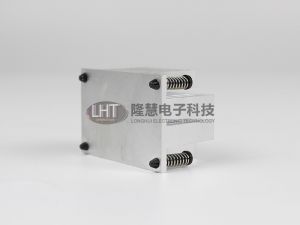
Although this function greatly reduces the incidence of CPU failures, if the CPU is allowed to work in a high temperature environment for a long time, it will also greatly shorten the service life of the processor. The key to solving this type of problem is to handle the heat dissipation problem. We know that the heat generated by the CPU during working hours is quite terrible, especially for some high-frequency processors, the heat generated during working is even more amazing. Therefore, to make the CPU better serve us, heat dissipation is indispensable. The normal operating temperature of the CPU is 35-65°C, depending on different CPUs and different main frequencies, so we have to choose a good heat sink for the processor. Not only requires the quality of the cooling fan to be good enough, but also to choose a product with a good heat sink material.
Under normal circumstances, most of the heat sinks of the boxed processors can meet the heat dissipation requirements of this product, but if you want to overclock, then the heat sink of the cassette will definitely not meet the heat dissipation requirements. At this time, you need to choose one for the CPU. A product with better heat dissipation performance. Although overclocking the CPU has become a compulsory course for many players, if your CPU is enough, it is not recommended to overclock the processor. Because even if your radiator is good enough, the life span of the CPU after overclocking will be shortened.
In addition, we also need to take some measures to protect the CPU and monitor the heat dissipation. We need to ensure smooth air circulation inside and outside the chassis to ensure that the heat generated inside the chassis can be taken out in time. If the heat dissipation work is done, some unexplained crashes can be reduced. We also need to know the working status of the radiator and the temperature of the CPU at any time, and the temperature of the CPU and the speed of the fan can be detected in a timely manner through the speed and temperature measurement software.

 English
English 中文站
中文站

